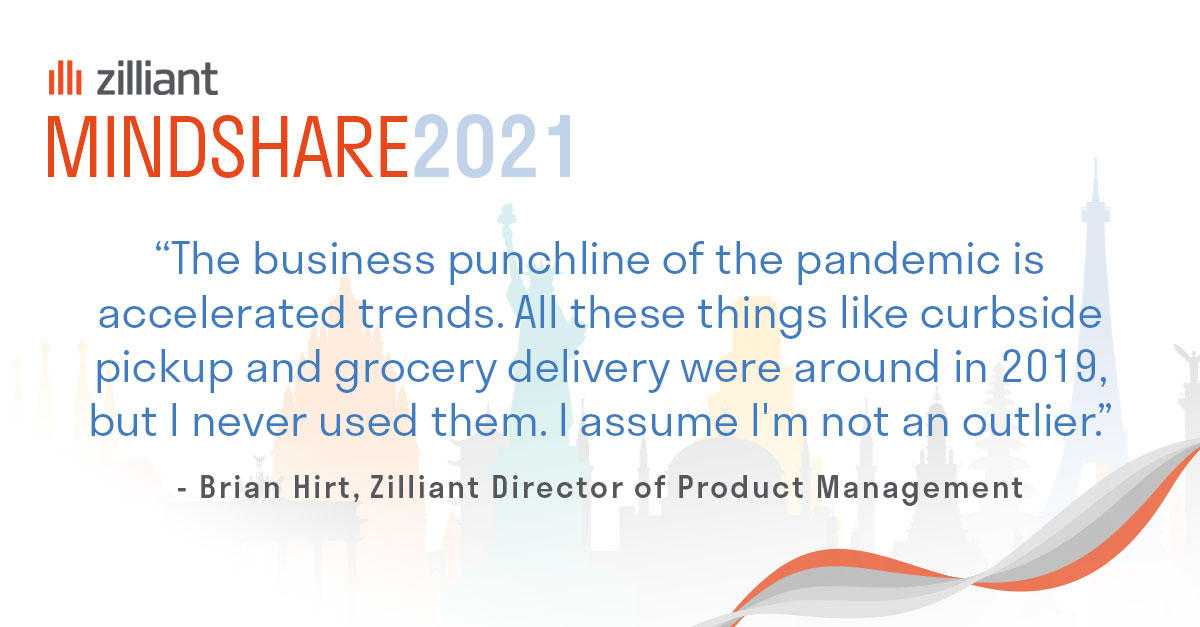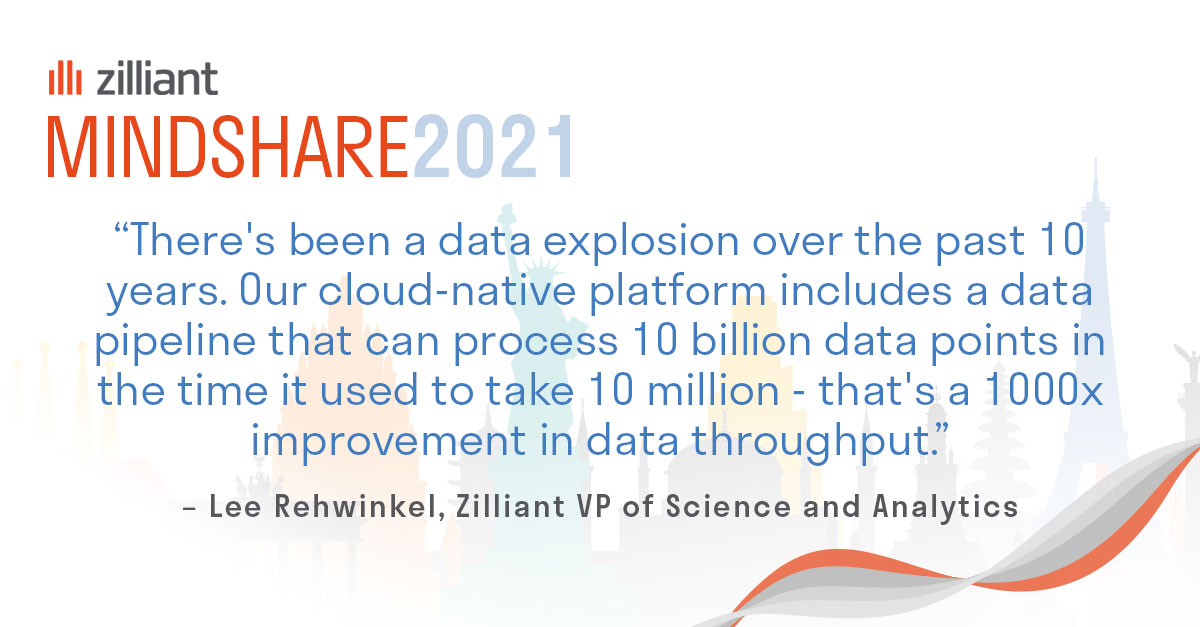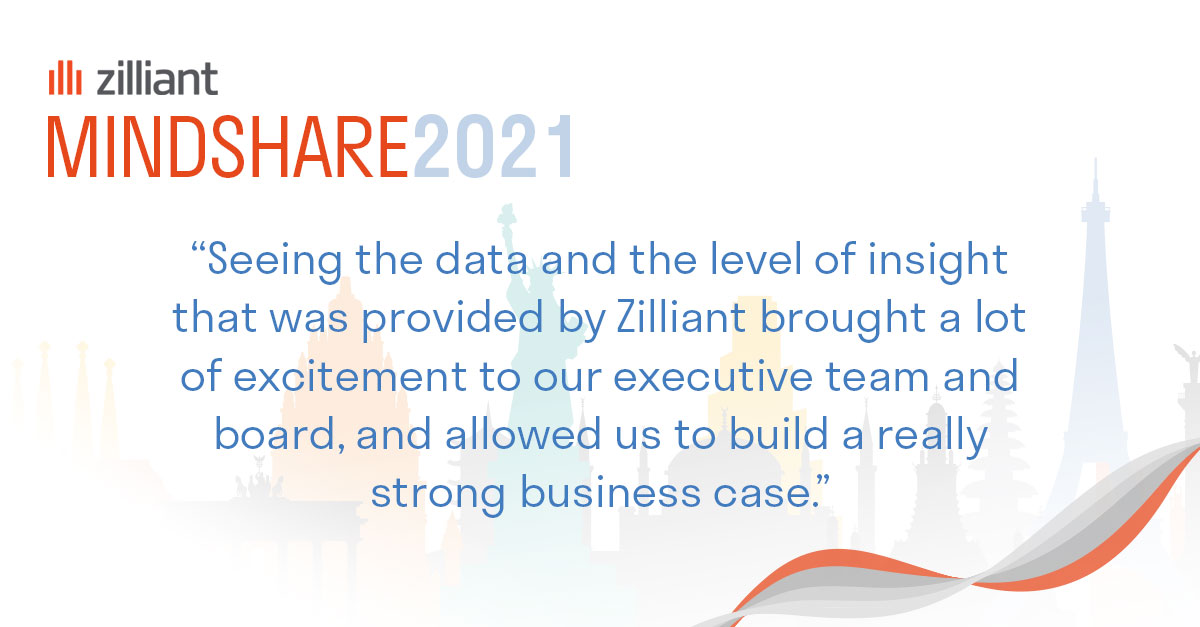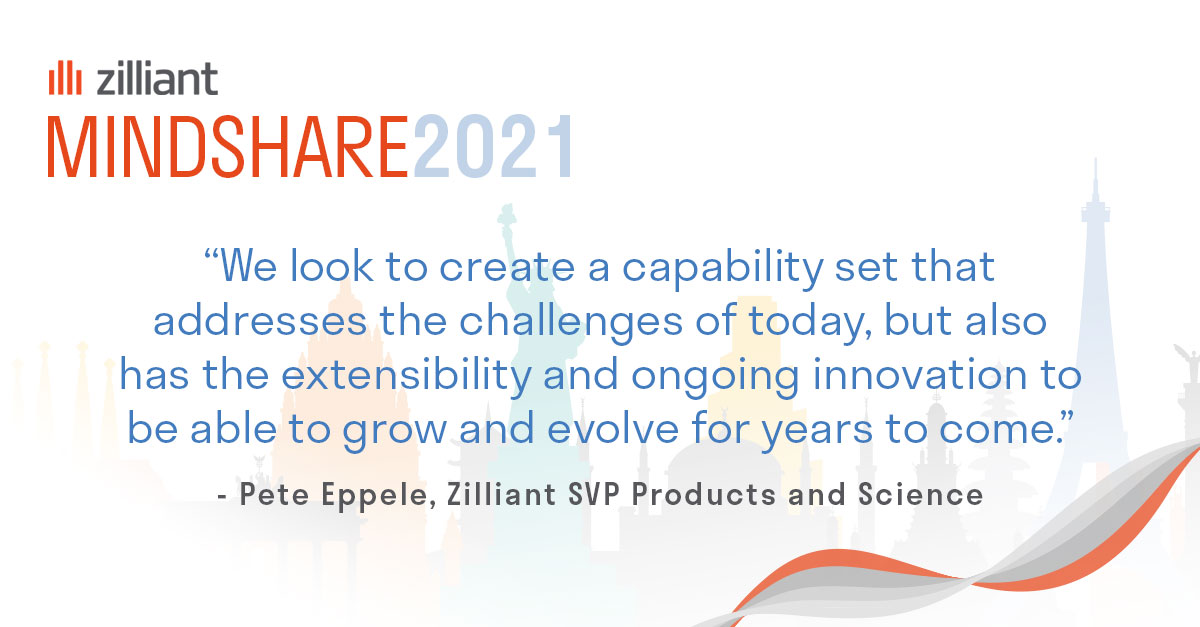Yet another successfulMindShare event wrapped up last week. Thevirtual versionofZilliant’spremier B2B pricing and sales conferenceattracted more than500 registrantsto15 expert-led sessions over three days. Though the hallway and lunchroomconversations will have to wait until MindShare Europe this fall and MindShare 2022 in Austin, the virtual event washighlycollaborative and left a lot of space for comments, question-and-answer,and audience feedback.
Here are some powerful quotes and fivequestions asked and answered duringthe interactive portions of MindShare 2021.

Q:During the worst times of the pandemic, how did sales adoption fare when pricing roadshows (sales branch evangelizing events) were forced to go virtual? Any advice on how best toevangelize pricingover Zoom?
A:Pricing adoptionoverall did improve year-over-year. Our branch visits were more a reintroduction of pricing guidance, so it was reeducating the field on the reason they’re getting the pricing and what to expect. The virtual was more of a reinforcement. The best part of that virtual visit is it truly did open the floodgates to have more conversations about pricing with the field in all levels of our business. Adoption did improve and we seemed to have a little more improvement after the virtual visits based upon the nature of the meetings.
Q:Are you dealing with a lot of cost increases, and if so, how do you manage those?
A:Yes, in our business we make a lot of products on our own as well as we work with a lot of vendors. Most of that is made overseas and just the freight costs alone here in the U.S.and with ocean freight globally, we’ve seen giant increases there and I know it’s well reported in the news.We’re certainly experiencing that, and I think as a company we’re fortunate thatour cost increasesarea little slower than true commodity goods. But it’s persistent. As it turns out,the Zilliant system has been incredibly helpful with us navigating thoseincreases.It’s keeping right up with the increasing cost to us but doing so in a way that it’s not kneejerk,and that’s very important. We’re not trying to get there faster than we should or faster than the market should, sothe systemdoes a really good job at helping us scale where we are at along that future cost curve. (Zilliant) really takes a lot of the stress out of that part of it.

Q:How quickly can a price action you make in the system affect your bottom-line revenue?
A: It really depends on your process. Specifically, for our process, we’re delivering daily files to Zilliant and feeding the optimization model. Then it really comes down to how frequently you’re publishing those prices. It could befairly quickdepending on your cadence of publishing and implementing price based onyour specificguidelines. If you have a longer cadence, it could be a little more time. The other piece is the impact of price. If it’s one customer, one price change, you’re not going to have a very large impact right away.Butif you have(a price action) for a group ofvery large customers, that will (accelerate results).

Q:What was your overall experience hiring a pricing consultant and how did that compare to bringing in a pricing software company? Any advice you’d give to someone looking to make a similar decision?
A:My advice would be if you can, do both. But make sure that you’ve got a pricing consultant that is in touch with the technology offerings that are available.In our situation what the pricing consultant did for us – I mentioned in the presentation that Zilliant was able to deliver similar insightsin some ways quicker and less expensively–but having a group of seasoned pricing consultants helped us validatea number ofthings. What became abundantly clear was that we were not going to be able to scale to the level that we needed to without a technology solution. Both sides of that equation do different things and do themreally well. There’s no argument thatZilliant’sability to scale was far and away more advanced than what we were getting from our pricing consultants. Both of those parties played a part in our pricing journey, the consultants were helpful in getting us kicked off, Zilliant was a necessary partner in helping us to sustain what we were trying to do and build a process that would be sustainable and that would reap ongoing business benefits.
Q:Can youactually measureprice elasticity in B2B?
A: It is true that elasticity is not easy to measure in either a B2B or B2C context, but here at Zilliant we’ve found it to be measurable, predictable, and actionable. There is one factor that plays a huge role in how effective the elasticity predictions are and that’s the amount and quality of data available to the algorithm. The more data we can feed the algorithm the better, and that includes not only order history but other supplemental data such as quote history and competitor data.




